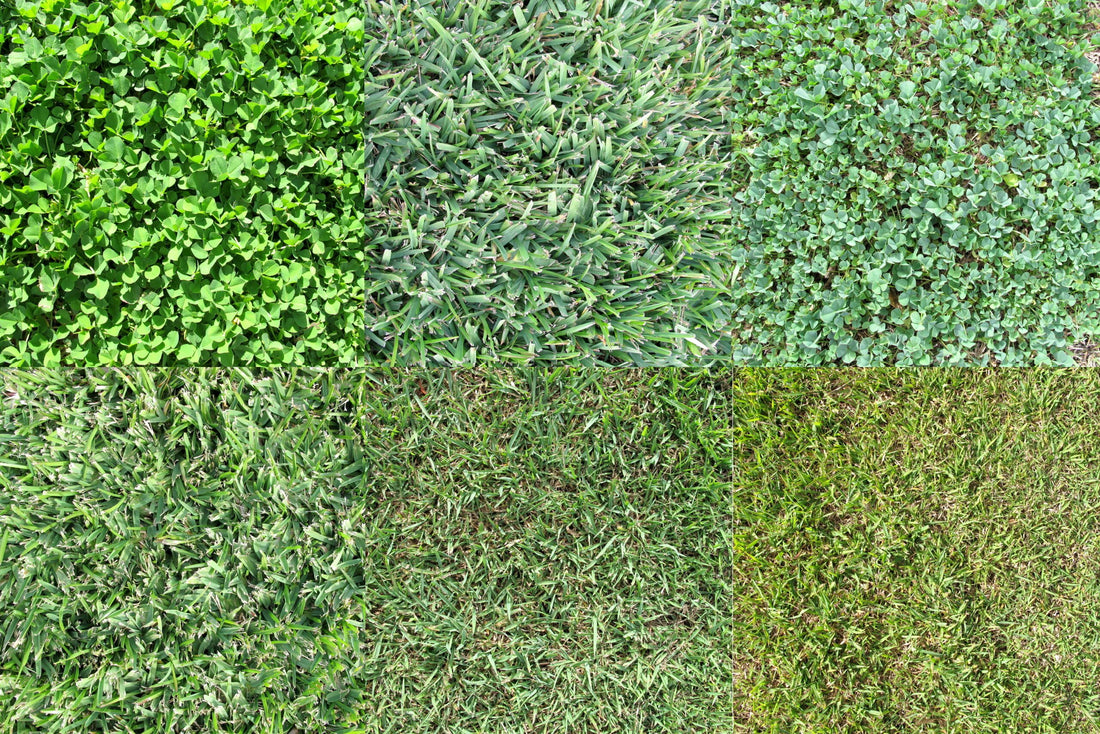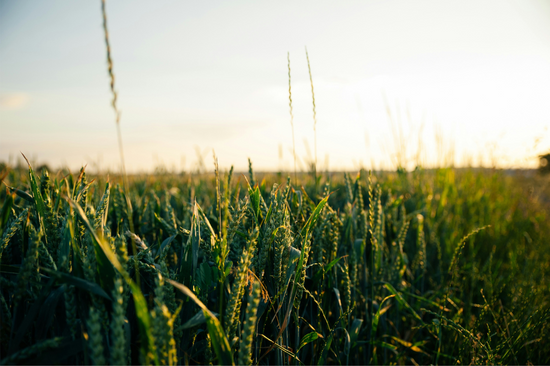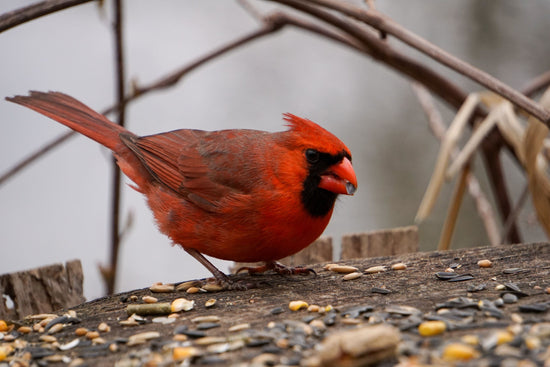The grass grows greener where you nurture it. But it’s a lot easier said than done — there’s often more maintenance work involved than most people imagine.
Setting up the groundwork (literally) for the perfect lawn requires picking the right types of grass.
Different types of grass come with pros and cons. Whatever you choose for your lawn will be heavily dependent on several situational factors.
Grasses by Season
You might be surprised to find your lush, green lawn becoming yellowish or brown in the fall.
Just as leaves turn different colors in different seasons, your grass will do the same.
Avoid problems by learning all about seasonal grasses and proper care to have the best types of grass for lawn.
Warm-Season Grass Varieties
Warm-season grasses flourish under the sun and are directly influenced by daylength.
The optimal temperature for warm-season grasses is at least 80 degrees Fahrenheit. Popular varieties include:
- Bermuda grass
- Centipede grass
- Carpet grass
- Zoysia grass
- Bahia grass
They are at their best in late spring to summer. During this time, they turn into a vivid green color that’s almost tropical in appearance.
When the cooler temperature of autumn rolls in, they may grow dormant and turn brown.
Cool-Season Grass Varieties
These lawn grasses thrive in moderately cool temperatures, performing well in both spring and fall.
These are often called perennial grass as they often grow all year long.
Cool-season grasses have a higher shade tolerance. They can grow at night and lose their sprightliness in summer. At 65 to 80 degrees, these grasses are at their prime:
- Kentucky bluegrass
- Perennial ryegrass
- Orchard grass
- Bromegrass
- Fescue
Because these turf grasses are cold-tolerant, they don’t fare well in hotter climates. They need to be planted in well-drained soil and watered regularly.
Types of Warm-Season Grasses
Have you decided which warm-season grass suits your lawn? Here are a few choices to get you started.
Bermuda grass
Bermuda grass is one of the most common grasses in the world, recognized not only for its bright green color but also for its practicality. It makes the easiest and wisest choice for most outdoor settings.
This grass has exceptional tolerance to heat and dryness, making it very self-sufficient.
However, it’s also notorious for being riddled with bugs and pests, as well as its quick growth rate.
Pros
- Versatile
- Low maintenance
- Lush, tropical look
- Can withstand extremely hot climates
Cons
- Rapidly spreads everywhere
- Susceptible to pests and fungi
Centipede grass
Centipede grass adapts quickly to low fertility conditions. It’s also known for its light-green hue, which makes for a lively-looking turf.
Among all warm-grass varieties, centipede grass has a higher shade resistance. It can even withstand winters in milder climates.
However, its growth rate is the slowest among all warm grasses. Its delicate surface holds little resistance to foot traffic and other stressors.
Pros
- Low maintenance
- High shade tolerance
- Will not turn completely dormant in winter
Cons
- Slow growth rate
- Low tolerance to foot traffic
Carpet grass
Carpet grass makes a good choice for its minimal upkeep. This grass is also known as “mat grass” or “blanket grass.” It can be broad and stout, or narrow and blunt.
Both kinds are uniquely coarse-textured.
This warm-season grass can quickly adapt to areas with less fertile soil. It can even grow in sandier soils, which makes it ideal for places with prolonged heat.
However, it has very low resistance to cold temperatures, growing stagnant quicker than other grass types.
Pros
- Low maintenance
- Bodes well in heat-induced, low-fertility areas
- Rapid growth
Cons
- Very sensitive to colder temperature
- Sparse surfaces
- Prone to insects and pest
Zoysia grass
This beautiful, emerald-green grass fares well in humid climate. Originally native to Asian soil, this turf grows lush and dense.
It’s a popular choice not only for its appearance, but also for its versatility and resilience. It can withstand foot traffic, and is resistant to weeds and pests.
While late spring and summer offer the optimal temperatures for its growth, zoysia grass can also tolerate colder seasons.
However, it does turn brown like other warm-grass types, and may stay dull even after winter is over. It also grows slower than other grasses, taking years before it reaches maximum density.
Pros
- Lush and dense
- Versatile
- Resistant to pests and weeds
- High tolerance to foot traffic
Cons
- Loses its brilliance in colder temperatures
- Slow growth rate
Bahia grass
Bahia grass is a coarse-texture grass that thrives in high heat.
It is known for growing inflorescence (grass flowers) which helps in pollination. This turf is accustomed to hotter climates and seasons since it is originally native to South America.
It has better cold tolerance than most warm-season grasses.
Unlike other types, bahia grass can stay at its prime from early spring to autumn. It grows thickly and rapidly, but risks an unkempt appearance if unattended for too long.
Pros
- Durable and dense
- Nutrient-rich
- Resistant to colder climate
- Rapid growth
Cons
- Requires more maintenance
- Can become invasive
- Susceptible to weeds
Types of Cool-Season Grasses
If you live in areas with crisp temperatures, cool-season grasses are the optimal choice.
Some are great for lawns, while others are more suited for larger lands such as pastures and meadows.
Kentucky bluegrass
If you want a perennial turf on your lawn, the Kentucky bluegrass is a fantastic choice.
Its blades grow from short to medium in height. Also called the common meadow-grass, this variety flourishes in the colder autumn months.
While it isn’t exactly as blue as the name suggests, it boasts of a brilliant, darker-green hue. Unlike other common cool-weather grasses, the Kentucky bluegrass is milder and tamer in appearance.
However, it also necessitates more frequent mowing and a higher maintenance level. Explore this grass variety to see if it’s a good fit for you.
Pros
- Ideal for lawns
- Versatile and self-spreading
- Thrives in cooler seasons, can remain in the summer
- Capable of recovery and repair
Cons
- Low tolerance for shade
- Susceptible to drought
- High maintenance
Perennial ryegrass
Narrow-bladed and finely textured, perennial ryegrass is a popular choice for its versatility. It can be used as lawn grass and in golf grounds, but it is also ideal for pasturing.
Because it grows in clumps, surfaces can look dense in good conditions, but sparse in others.Perennial ryegrass is often used as a long-term covering, but it does need to be well-maintained. It withstands shade and colder temperatures, and can fare well all year long.
If you prefer moderate maintenance and versatility, you might want to consider this variety.
Pros
- Versatile
- Low maintenance
- Highly resistant to foot traffic
- Capable of recovery from grazing
Cons
- Low heat tolerance
- Can have sparse areas
Orchardgrass
Orchardgrass is a tall-growing, narrow-bladed grass known for its nutrient-rich foliage. It is one of the best choices for growing plants and pastures.
This variety is not the prime choice for landscaping. Rather than small backyard lawns, they’re best used for larger plots of land such as meadows.
Orchardgrass is very durable, withstanding both high heat and freezing cold.
Pros
- Nutrient-rich
- Durable
- Resistant to extreme temperatures
Cons
- Tall-growing
- Unsuitable for yards and smaller plots of land
- Prone to pests and weeds
Read: Ultimate Guide to Growing Your Orchardgrass
Bromegrass
Bromegrass is a perennial foliage native to South America. It grows inflorescence which helps enrich the soil with more protein and nutrients.
Much like orchardgrass, bromegrass is best for wide plots of land. It is not ideal for display lawns as it can grow quite unkempt.
However, it may be your best bet if you’re picking vitamin-rich grass for pastures or large meadows. This cool-season grass is among the most tolerant of winters and other environmental factors.
If durability is your main concern, this type of grass is for you.
Pros
- Rich in protein and nutrients
- Ideal for pastures
- Versatile and very durable
- Extremely cold-tolerant
Cons
- Tall-growing
- Unsuitable for yards and smaller plots of land
- Can give people hay fever (allergic rhinitis)
Fescue
Fescue is among the best types of grasses for lawns. This hardy, versatile grass is highly resistant to colder climates, which makes it ideal for northern areas.
Typically sold as mixed seeds, fescues are known for their diverse characteristics. Some types include:
- Creeping red fescue. This finely textured grass is a remarkable choice for lawns.
- Hard fescue. This durable grass is often found in unused, uninhabited areas. It grows slowly, but strongly.
- Fine fescue. This shade-tolerant grass is great for landscaping. However, it is delicate and cannot withstand foot traffic.
-
Tall fescue. A common, nutrient-rich forage for pastures and grazing. Variety Not Stated (VNS) tall fescue is often used as a starter as it offers great value for money.
Because of its inclination to cooler seasons, it requires heavier maintenance during the summer.
Pros
- Super versatile
- Adapts in diverse environments
- Resistant to stressful factors
- Thrives in cooler weather, but continues to grow in summer if well-maintained
Cons
- Requires maintenance in warm seasons
- Can grow sparse in some areas
- Slow to recuperate
How to Choose What Grass to Plant
Picking the proper grass is a bigger commitment than most people might think. Weighing these factors as early as possible will save you from potential risks.
Purpose
Are you buying for landscaping purposes? Grazing and pasture? Consider what matters—aesthetics, soil, pollination, and more—before you decide on the type of grass for your project.
Location
Temperatures and soil conditions play a huge role in grass growth. Before purchasing a grass starter, ensure that it is well-suited for your location and other external conditions.
Maintenance
Lawn care will not always be a walk in the park. Some grasses may need more care and attention (just like any other plant!). On the other hand, other grass types may just need you from time to time.
What are the Best Types of Grass for Your Lawn?
Objectively, there’s no right answer to what the best type of grass is. If you want to narrow down the “best,” you’ll have to consider different criteria.
Season
Durable, low-maintenance grasses, like Bermuda or zoysia make a great warm-weather choice. Clean, moderately maintained grasses like bluegrass and ryegrass perform the best in cooler areas.
Appearance
Of course any lawn can be beautiful, but some grasses are more known for their color and luster. Among these are the zoysia, Kentucky bluegrass, and red fescue.
Durability
The prize easily goes to taller grasses and fescues. But in terms of resistance to stressors, grasses that are native to hotter climates can easily be identified as durable.
Maintenance
Some grasses don’t require a watchful eye. Here, the best would be self-sufficient grasses that don’t turn too wild or invasive. Zoysia, bluegrass, and ryegrass take the cake.
Read: How to Choose The Best Fertilizer for Your Lawn
FAQs About Grass For Lawn
What is the easiest grass to maintain?
Many warm-season varieties require low maintenance. The most popular ones are Bermuda, centipede, and zoysia. For cooler-season varieties, Kentucky bluegrass and perennial ryegrass are fan favorites.
Which grass stays green all year?
Cool-season grasses typically stay green all year as long as they are properly maintained. However, warm-season grasses can remain green as well, especially in areas within the transition zone.
Which is better: Fescue or Bermuda grass?
Situational factors play a significant role in what is “better.” For northern areas, fescue is ideal because it performs well in cold weather. However, in the warmer climates of southern states, Bermuda would fare better. Both these grass types require little maintenance.
What is the most durable type of grass?
Taller grasses, such as bromegrass and orchardgrass, are hardy. They can withstand heavy foot traffic, grazing, and cold temperatures. For lawns, Bermuda and zoysia grasses are the most durable.
What grass takes the least amount of water?
Warm-season grasses, such as carpet grass, are more resistant to heat and drought. Some of them can even be cultivated in less fertile areas.
Conclusion
When it comes to building the perfect lawn, planting grass is the root of everything. You cannot achieve the ideal space if you don’t lay the groundwork properly. So before you invest in a grass starter, make sure that you’re well-equipped with the basics and know-how.
If you're not sure what grass to plant, don't hesitate to contact us at Standish Milling. Alternatively, you can explore the available grass seeds in our store to see if there's one you'd like.





